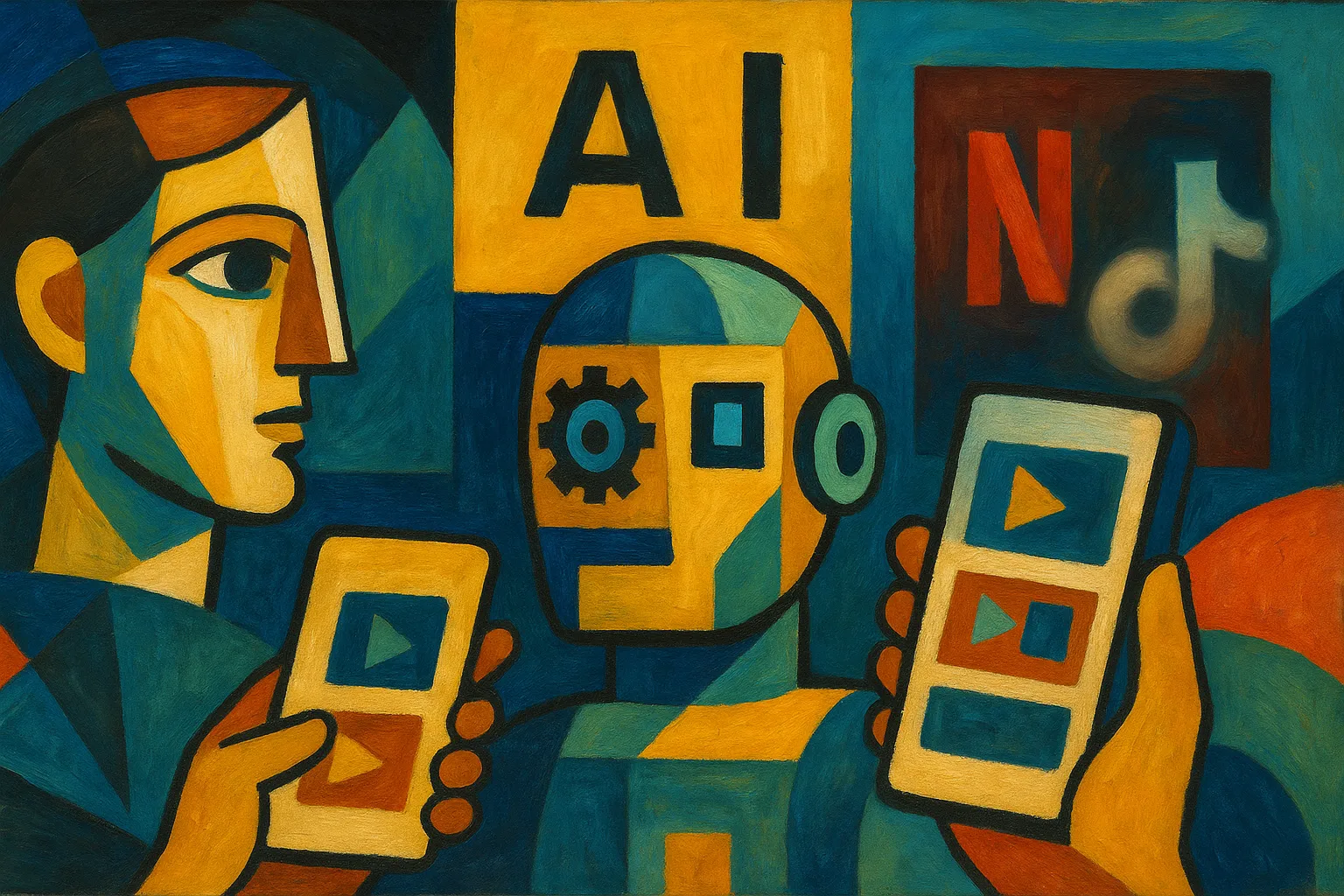Introduction: Why AI Feels Like Magic (But Isn't)
Have you ever opened Netflix and thought, "Wow, that's exactly what I wanted to watch"? Or scrolled through TikTok only to get eerily accurate content that matches your humor, interests, or mood?
It's not magic. It's machine learning.
Recommendation systems—powered by artificial intelligence (AI)—are behind many of your everyday digital interactions. Whether it's YouTube, Spotify, Amazon, or your favorite news app, these systems work silently to tailor content just for you.
In this article, we'll break down how recommendation algorithms work in plain English. No tech degree required.
What Are Recommendation Systems?
A recommendation system is a type of AI that predicts what you might like based on past behavior. It's how streaming platforms, e-commerce sites, and social media apps decide what to show you next.
These systems generally rely on two core methods:
- Collaborative filtering
- Content-based filtering
Let's unpack them—no math, ı promise.
Collaborative Filtering: Learning from Digital Twins
Think of collaborative filtering as digital word of mouth.
Here's a simple analogy:
Imagine you love sci-fi movies, and your friend Alex also loves sci-fi—but they've also seen a fantasy series you haven't. If Alex liked it, there's a good chance you will too.
AI does something similar, but with millions of "Alexes." It compares your behavior (what you watch, like, buy, or skip) with others who have similar habits. If people like you loved a particular item, you might get a recommendation for it—even if you've never heard of it before.
That's how Netflix and Spotify make their eerily accurate suggestions. It's like having thousands of digital twins giving you personalized advice.
Content-Based Filtering: Judging a Book by Its Features
Now imagine you watch a lot of crime dramas with strong female leads. A content-based system will analyze the characteristics of what you like—genre, actors, themes—and find other items with similar traits.
It's like saying, "You liked this book because it's a thriller with a twist ending—here are 10 more like it."
Content-based filtering focuses on the item's features and matches them to your preferences.
TikTok often uses a hybrid of both methods—pairing user behavior patterns with the video's metadata (captions, hashtags, audio, etc.) to fine-tune your feed.
The Secret Sauce: Similarity Metrics
How does AI know what's "similar"? That's where similarity metrics come in.
These are mathematical formulas that measure how alike two things are. For example:
- How many users watched both Stranger Things and The Umbrella Academy?
- Do two videos have overlapping hashtags, styles, or soundtracks?
These metrics create a giant web of associations—connecting users, content, and patterns to deliver suggestions that feel human.
Why It Works So Well (Sometimes Too Well)
Recommendation systems get better over time the more data they have. The more you interact—watch, scroll, like, share—the smarter the system becomes.
But there's a catch.
You may get trapped in a "filter bubble"—only seeing content that reinforces what you already like.
This is why your TikTok feed might feel hyper-tailored, but also repetitive. It's also why Netflix keeps showing you the same types of shows, even if you're in the mood for something new.
Smart platforms now mix in "exploration content" to help you discover outside your comfort zone.
How You're Training AI Without Even Knowing It
Every action you take—watching a movie, skipping a video, liking a post—feeds the AI. You're constantly teaching it your preferences.
This raises questions about:
- Data privacy
- Algorithmic bias
- Digital autonomy
It's a conversation we all need to be a part of. Understanding the basics of AI helps you become a smarter digital citizen.
Takeaway: AI Is Your Digital Twin's Best Friend (and Personal DJ)
Recommendation systems are everywhere—and they're getting smarter. Whether it's suggesting a binge-worthy series or introducing you to your next favorite song, these algorithms work by learning from you and people like you.
It's like having a personal DJ, movie critic, and shopper in your pocket.
And now that you understand how it works, you're better equipped to use it, question it, and even outsmart it when needed.
Bonus: 3 Ways to Outsmart the Algorithm (If You Want To)
- Clear your watch or search history regularly for a fresh start.
- Interact with diverse content to train the algorithm more broadly.
- Use multiple profiles to avoid polluting recommendations for different moods or users.
FAQs About AI Recommendations
Q: Is AI spying on me?
A: Not directly. AI uses patterns from your behavior—not your private messages—to recommend content.
Q: Can I turn it off?
A: Most platforms let you limit tracking, but it may affect personalization quality.
Q: Why do my recommendations change so quickly?
A: Algorithms are dynamic—they respond rapidly to new interactions.
Final Words
You don't need to be a data scientist to understand how AI recommendations work. You just need curiosity—and maybe a healthy sense of skepticism.
Remember: The algorithm works for you—not the other way around.
